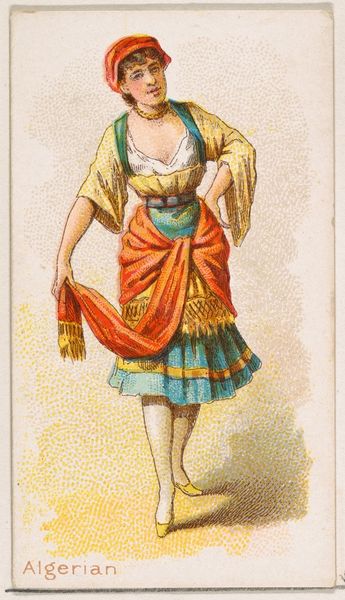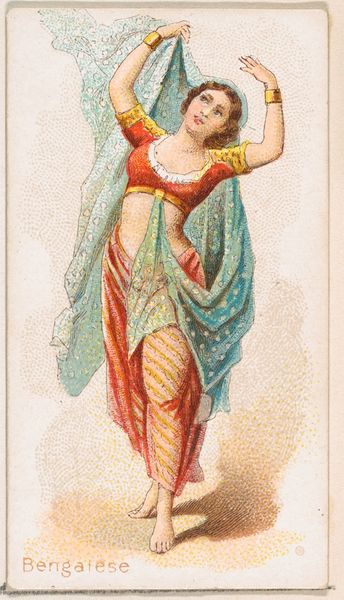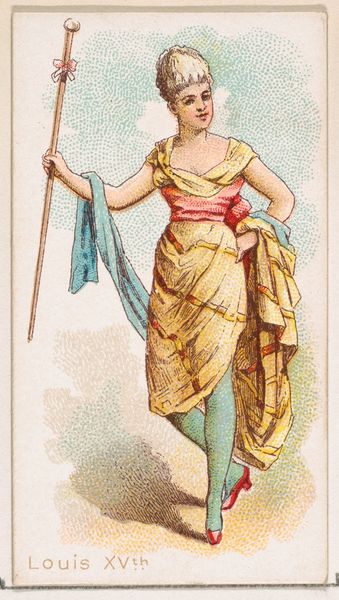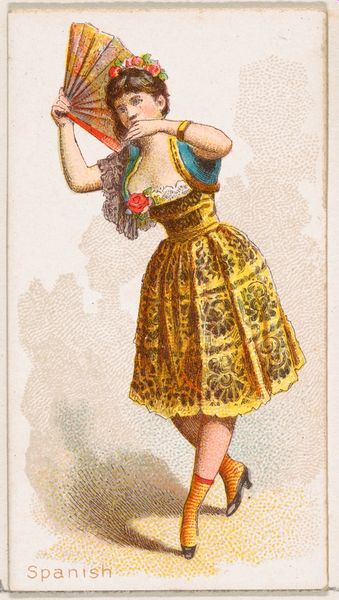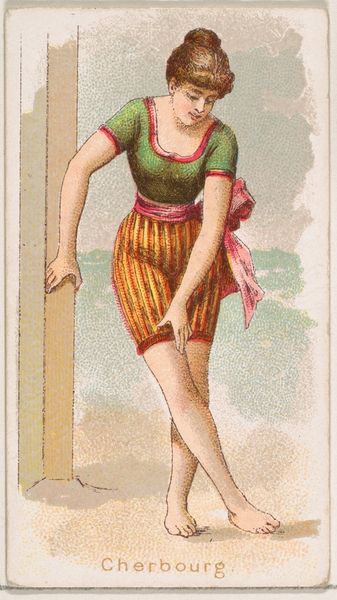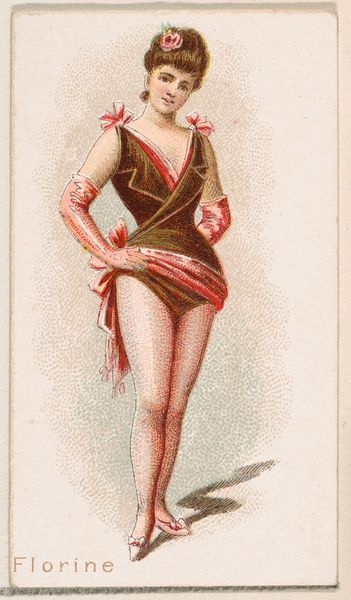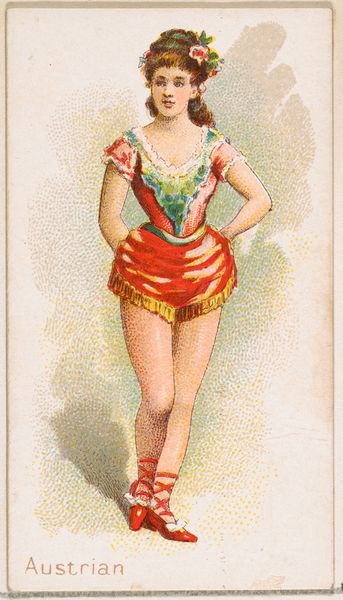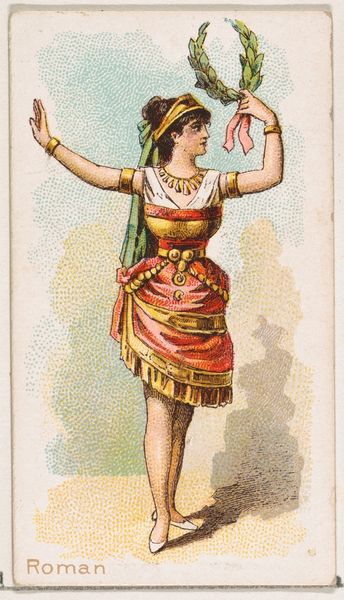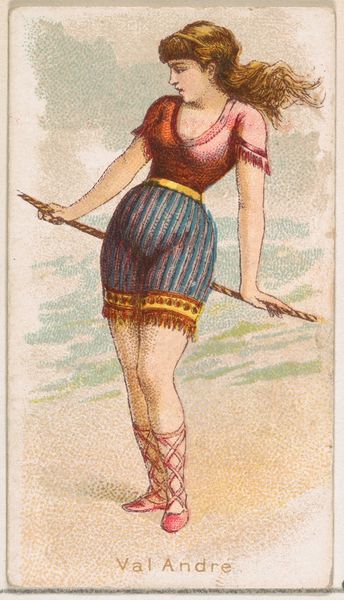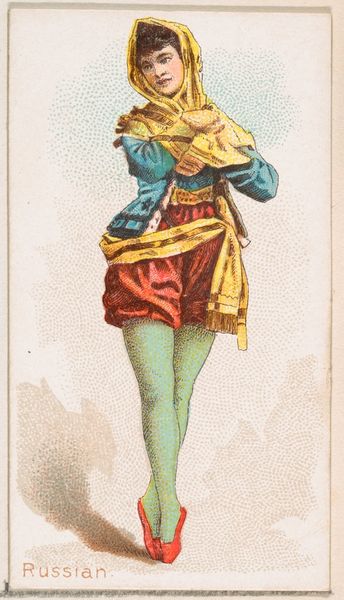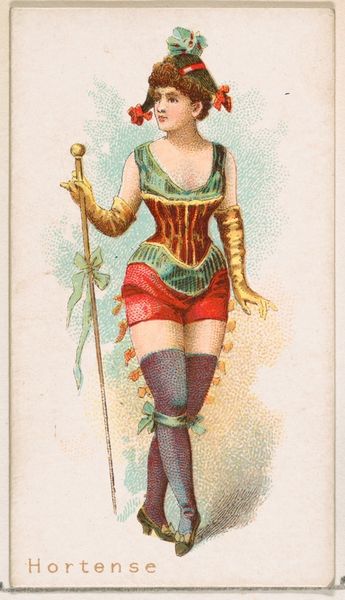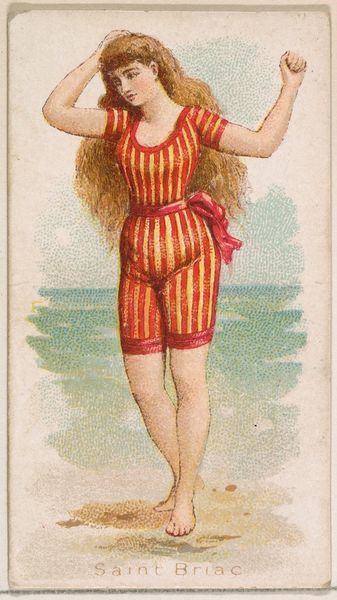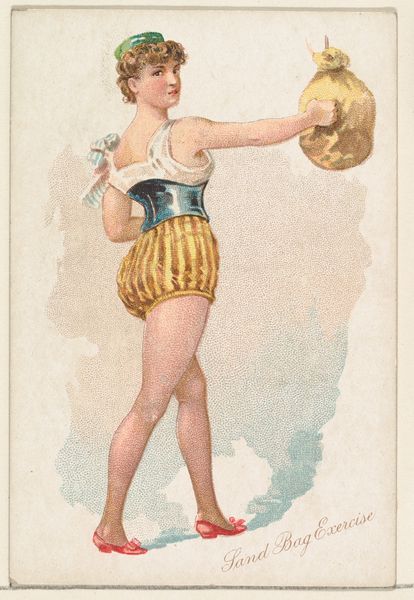
Antique East Indian Dancer, from the Dancing Women series (N186) issued by Wm. S. Kimball & Co. 1889
0:00
0:00
drawing, coloured-pencil, print
#
portrait
#
drawing
#
coloured-pencil
# print
#
caricature
#
figuration
#
coloured pencil
#
orientalism
Dimensions: Sheet: 2 11/16 × 1 7/16 in. (6.9 × 3.7 cm)
Copyright: Public Domain
Editor: This is "Antique East Indian Dancer" from the Dancing Women series, a print from 1889 by Wm. S. Kimball & Co. I’m immediately struck by the figure's pose – it feels so theatrical, almost like a character from a story. How would you interpret this work? Curator: The symbols and gestures embedded within the dancer reveal a potent blend of cultural memory and projected fantasy. Note how her pose, draped in what is meant to suggest a translucent fabric, references classical depictions of the exotic "Orient," filtered through a Western lens. Editor: So, it's less about actual representation and more about constructing a specific image? Curator: Precisely! Consider the jewelry: the armbands, headpiece, the emphasis on ornamentation. What emotions are conjured through this? The symbolism plays on the West’s imagined view of Eastern sensuality and opulence. Think about the original context – this was part of a series issued by a tobacco company. Editor: So, it was intended to be alluring and captivating, as a means to sell a product. I wonder if viewers at the time questioned its accuracy. Curator: The popularity of Orientalism suggests many accepted it without much interrogation. These images are fascinating because they expose cultural power dynamics – who has the authority to represent whom, and what are the consequences? How does the idea of a "dancer" carry that authority? Editor: It's eye-opening to consider the loaded symbolism in what appears to be just a pretty picture. The layers of meaning beneath the surface change my perspective completely. Curator: Indeed, it reveals how deeply images can reflect and reinforce cultural beliefs, whether accurate or not. Recognizing these underlying meanings allows us to engage critically with our visual culture, both past and present.
Comments
No comments
Be the first to comment and join the conversation on the ultimate creative platform.
